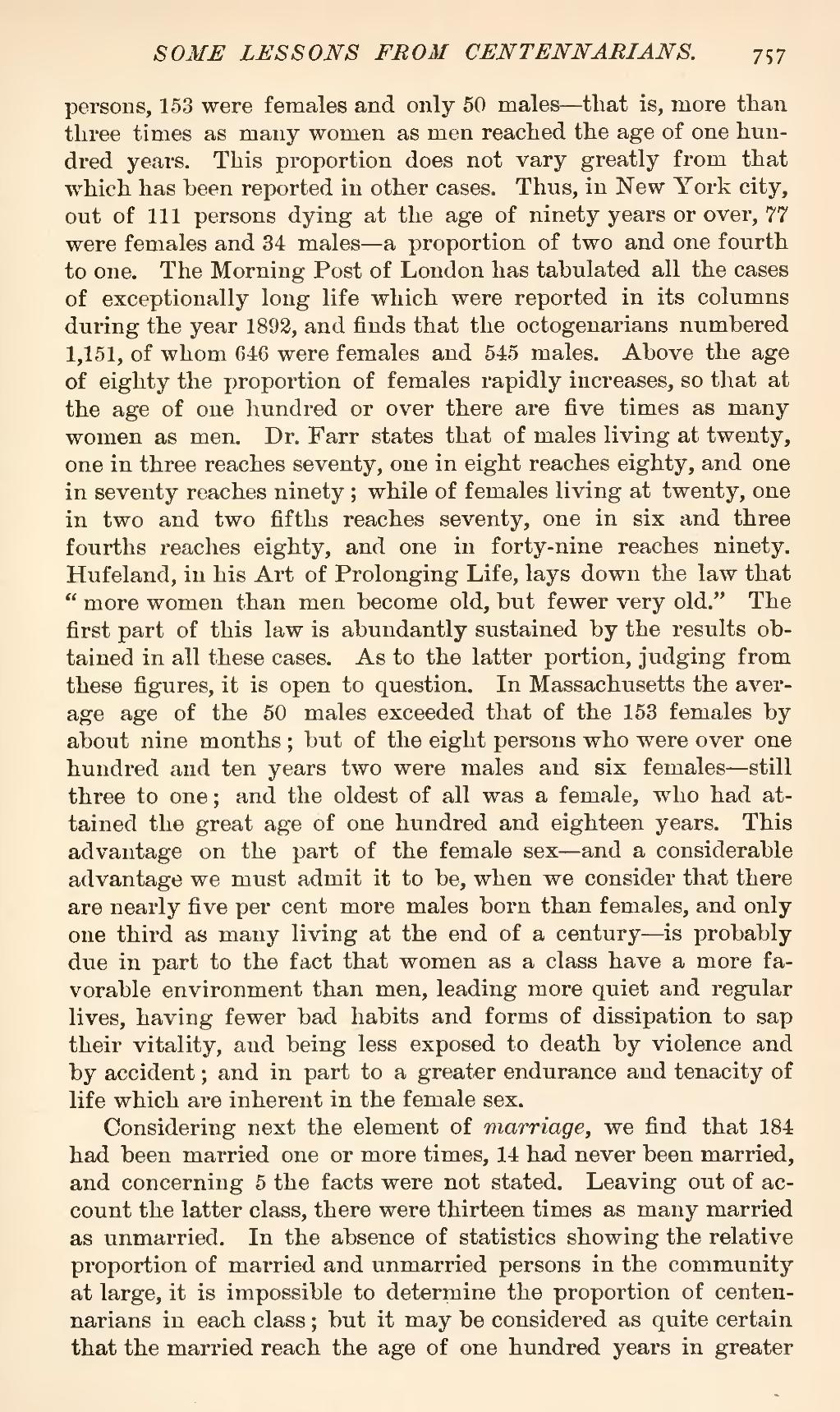persons, 153 were females and only 50 males—that is, more than three times as many women as men reached the age of one hundred years. This proportion does not vary greatly from that which has been reported in other cases. Thus, in New York city, out of 111 persons dying at the age of ninety years or over, 77 were females and 34 males—a proportion of two and one fourth to one. The Morning Post of London has tabulated all the cases of exceptionally long life which were reported in its columns during the year 1892, and finds that the octogenarians numbered 1,151, of whom 646 were females and 545 males. Above the age of eighty the proportion of females rapidly increases, so that at the age of one hundred or over there are five times as many women as men. Dr. Farr states that of males living at twenty, one in three reaches seventy, one in eight reaches eighty, and one in seventy reaches ninety; while of females living at twenty, one in two and two fifths reaches seventy, one in six and three fourths reaches eighty, and one in forty-nine reaches ninety. Hufeland, in his Art of Prolonging Life, lays down the law that "more women than men become old, but fewer very old." The first part of this law is abundantly sustained by the results obtained in all these cases. As to the latter portion, judging from these figures, it is open to question. In Massachusetts the average age of the 50 males exceeded that of the 153 females by about nine months; but of the eight persons who were over one hundred and ten years two were males and six female—s still three to one; and the oldest of all was a female, who had attained the great age of one hundred and eighteen years. This advantage on the part of the female sex and a considerable advantage we must admit it to be, when we consider that there are nearly five per cent more males born than females, and only one third as many living at the end of a century—is probably due in part to the fact that women as a class have a more favorable environment than men, leading more quiet and regular lives, having fewer bad habits and forms of dissipation to sap their vitality, and being less exposed to death by violence and by accident; and in part to a greater endurance and tenacity of life which are inherent in the female sex.
Considering next the element of marriage, we find that 184 had been married one or more times, 14 had never been married, and concerning 5 the facts were not stated. Leaving out of account the latter class, there were thirteen times as many married as unmarried. In the absence of statistics showing the relative proportion of married and unmarried persons in the community at large, it is impossible to determine the proportion of centennarians in each class; but it may be considered as quite certain that the married reach the age of one hundred years in greater
